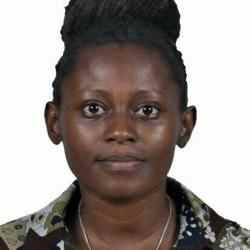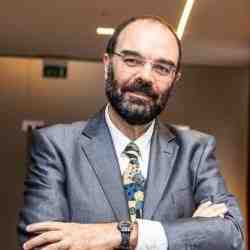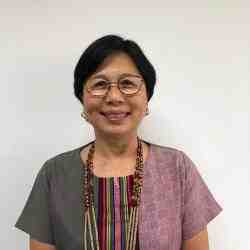Introduction
Camilio is catalyzing the integration of isolated and non-connected communities through internet access and illumination in areas where the government and private markets have yet to reach. In doing so he is generating resources for and by the community.
The New Idea
Camilo is providing communities with access to street illumination and internet services. And through these new services, communities are better connected to the outside world while simultaneously contributing to a community savings account in which a portion of the proceeds are given back to the community to be used for community projects and developmental needs. In doing so, he is enabling communities to generate their own resources.
Camilo works in areas where the State and private companies have yet to reach (e.g. rural communities in territories previously under FARC control - Colombia’s largest rebel group) or in areas affected by natural disasters. By reproporting where the internet arrives, Camillo in partnership with the Ministry of Information and Communications Technology of Colombia (The National Internet provider), provides access to the internet, creating a network effect through his lamp post. Furthermore, by working with community leaders, Camilo forms Lighting Committees--making them co-participants of Linternet-- to then help identify the most vulnerable places where light and internet is needed.
While internet access is re-proportioned to rural communities free of charge, to incentivize the maintenance of the poles and the future use of their lighting and internet properties, Camilo has established a community token system: a billing system for internet use in which a small fee is charged for internet use. The money goes to cover a community investment fund to be used for community projects. Moreover, it is the community themselves that decide how the money is spent.
Along with providing rural communities with access to lighting and internet. Camilo, has also formed alliances with other entrepreneurs, large companies and public and social institutions to provide free of cost: education and information, both offline and online through his Linternet kiosks- They are installed in every community.
As of 2017, Camilo reached 8 countries consisting of 32 communities and 220.000 people. Furthermore, in 2017 he won the Google Challenge, commiting to expand his reach to over 100 new communities within the next 3 years.
The Problem
31 million people live without electricity across Latin America. In Colombia alone, around 5 million people live without connection to the national grid, which means that roughly 1 million families live without electricity. Geographically, 66 percent of Colombian territory is not connected to the national grid. This disproportionately affects marginalized communities or those at the center of Colombia’s recent geopolitical conflict. It is also compounded by the lack of other basic services and the remoteness of parts of Colombia’s territory. For example, 90 percent of La Guajira, the Northernmost region in Colombia and home to the Wayuu people, has very little in the way of access to power, drinking water or public facilities (such as schools and hospitals) despite receiving upwards of $40 million in royalties for coal mining.
The Colombian government has made efforts to connect these communities with solar energy and/or diesel power plants. However, there is no long-term plan for their maintenance and thus these facilities often become dysfunctional due to a lack of replacement parts and knowledge on how to maintain them. In addition, paramilitary groups frequently treat power plants and towers as military targets, setting bombs and bringing down infrastructure recently invested in by the state. With no strategy or local knowledge for repairing these, they remain unusable. In some regions, the overall government strategy for connecting communities to electricity and to the Internet is disconnected and fragmented. For example, the government has given away tablets to remote communities with little to no electricity or internet access. In other cases, while it may be logistically easier to connect certain communities to the national grid, they cannot do so until they are recognized as legal districts, which is a process that can take 20 to 30 years.
The Colombian government has been able to provide internet connection to most people in the country: 6 out of 10 Colombians are connected to internet according to Technology Ministry. However, most of the reached population is located in cities; marginalized communities in remote areas are still heavily isolated and don’t have access to internet.
Colombia has experienced 50 plus years of conflict. This conflict has caused the displacement of thousands of Colombians who have been forced to leave their place of origin and to stay on the periphery of large cities in search of new opportunities. Without access to basic services, we see more youth defecting to gangs or crimes, yielding increased rates of violence. Furthermore, these communities are invisible, forgotten and without traditional lighting systems. This results in unsafe communities for children and women with little chance of personal and community development.
The Strategy
Camilo uses technology as a tool to connect people who live in rural areas and those territories affected by conflict. Working with the communities, Camillo installs Linternet’s intelligent energy posts called ELIOT (Energy Light Internet of Things). To do so, Camilo works with community leaders--who are responsible for the post--to determine where they will be placed. With this methodology, Camilo also provides communities with technology and solar energy workshops, where the community learns how to build, install and maintain the solar powered poles. Furthermore, community members assemble the posts themselves and through social mapping techniques, learn how to expand coverage to areas further isolated from lighting and internet connectivity.
Camilo provides a cheap solution to connecting rural communities where the current Colombian government has been unable to reach. In partnership with MICT, Camilo is able to reroute internet to rural communities, using his light posts as routers. For now, this rerouting service has been provide to the communities free of charge. However to generate shared responsibility for the posts, and to also tie the scheme to something that would benefit all in the community. Camilo developed a funding scheme in which communities pay a small fee for internet use while simultaneously creating a savings fund for the community. This Token-system enables to creation of jobs and the generation of a fund to be used by the community at their discretion. Example community needs could be an ambulance boat for remote communities on the water or a new playground for kids to have a safe place to stay.
Most recently, Camilo partnered with the MICT whom have been installing internet Kiosks in rural communities. Camilo partnered with the MICT to not only provide internet and connectivity to rural communities, but to also provide offline (updated daily) access to educational and information sites like Wikipedia. In doing so, Camilo hopes to spread internet usability so that children and teachers can have access to up to date educational information and not only use it for games and play.
Thanks to the support of Google, in 2018 Camilo will work to refine his design and production process of ELIOT posts. Included in this is an upgrade in the management software and mobile app development, and the creation of a easy to assemble (do-it-yourself) post, which may be offered to the public in a box. This post will integrate sensors, Wi-Fi internet access, public light and electrical outlets, based on solar energy and recycling elements. Furthermore, Camilo will look to expand into 100 communities in rural areas without telecommunications and energy services. With this expansion, Camilo hopes to reach over 100,000 Colombians..
Camilo’s model has reached over 8 countries on three different continents. In partnership with the Colombian Embassy in Ghana and the Presidential Agency for Presidential Cooperation of Colombia, Camilo has been able to connect and light more than 32 communities (over 220,000 people) in countries such as Ghana, Kenya, Chile, Ecuador and Jamaica. In Colombia, Camilo has reached over 16 cities and has even implemented posts in the South of Cordoba: one of the most dangerous conflict zone with the presence of the paramilitary group ELN benefiting 13 communities. Examples of the areas he has impacted include an orphanage in Kenya, providing illumination and internet access to 830 children and in the community of Caribia in Necoclí in the Region Antioquia in Colombia, benefiting 460 people.
For future plans, along with his goal to move to 100 new communities with Google, he is also partnering with NGOs to train them on how to implement his project. Furthermore, within the next year, Camilo plans to partner with the ACUACAR project to illuminate soccer fields in Cartagena and in partnership with Aguas de Cartagena illuminate the community of Rocha and the indigenous community of La Guajira.
As part of his sustainability strategy, Camilo transformed his organization into a B corp in which all revenue will be reinvested into the organization. He is also working to reduce the cost of the posts from 500 USD to 120 USD; currently Camilo has found sponsors for all posts and kiosks installed.
Among his allies, Camilo works with the Ministry of Foreign Affairs of Colombia and the Embassy of Colombia in Ghana, The UNDP for the replication of the project in Africa; with the Parliament of Ghana; the Ministry of technology of Colombia and Colciencias. Additionally he has the support of Pepsico, SIKA, Postobon, Pavco, Impact Challenge, Ashoka Baker & Mckenzie, Aguas de Barcelona, ENEL group, Aguas de Cartagena (who is also a supplier of his stipend), Zayed (EAU), Socialab, Accenture, Everis. For measuring impact, training, networking and innovation management Camilo works with the EAN University, the University of Saint Gallen, INSEAD and MIT. In addition, Camilo was selected as the winner of the Google Challenge 2017 in the category National winners.
The Person
Camilo is a passionate and tenacious person. His mother, who raised him after his father died at the age of 11, is the most influential person in his life. His mother was an entrepreneur who never had a formal job or access to formal education. Today she owns a restaurant and taught him to persevere and to differentiate between desire and need in order to reach one’s goals.
Camilo was a very studious child who received scholarships to support his studies. He comes from a musical family, and has played the harp since age nine, participating in many cultural events. In 2001, at age 15, he was National Champion of Mathematics Olympiads in Colombia. His mother did not have a steady job and he was an only child so he has worked since he was 16 years old to help his family, playing the harp in ceremonies and events to make money. He studied medicine due to his inclination to help others but did not have the funds to continue. At age 22, he started a small business called Smokecares S.A.S to sell electronic cigarettes to help people quit smoking. That business eventually went bankrupt and he returned to his grandparents' house to live. After this learning experience, Camilo said that he had to learn very quickly and refocus his energy.
He began working with the Ministry on a program to bring internet to police stations, schools and hospitals in small municipalities in the country, many of them in conflict zones. With no money to pay for a university, Camilo enrolled in SENA, a public program where he met Ilac Diaz, founder of 1 Liter of Light from the Philippines. Camilo began by bringing the 1 Liter of Light project to Colombia and resumed his Business Administration career at the EAN University in Bogota. He studied Social Entrepreneurship in 2013 at INSEAD Business School in France. In 2014 he went to a conference in Massachusetts Institute of Technology (MIT) and presented his methodology for measuring impact at a Humanitarian Technology Conference. Camilo received the TR-35 award, a MIT award recognizing him as one of the most important Colombian innovators under 35 years. In 2013, he won the Royal Salute’s Mark of Respect contest, which positioned Litro de Luz as one of the best social organizations in Colombia. He is an official partner of the OASECPA -Energy and Climate Strategy for the Americas-, he is a member of the United Nations program Sustainable Energy for All. He represented social innovation in Colombia, presenting at the World Economic Forum in Davos, Switzerland 2013. He won the SEED Award in the Low Carbon Start Up category in 2013. He received a prize in Kenya from the United Nations and he was Second Place in the Stephan Schmidheiny Awards in the Innovation for Sustainability category, with a prize of $ 5,000 and a scholarship to attend a workshop for social entrepreneurs in 2014 at INCAE Business School. He is currently mentored by Sergio Espinosa, Colombian business leader recognized for IT innovation.
Camilo now has a 3 year old daughter named Ainhoa, who he says is the driving force behind his life as he fights to give her a better world than the one he was born into.




